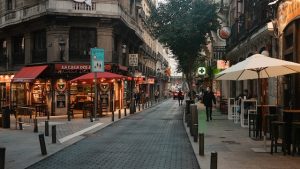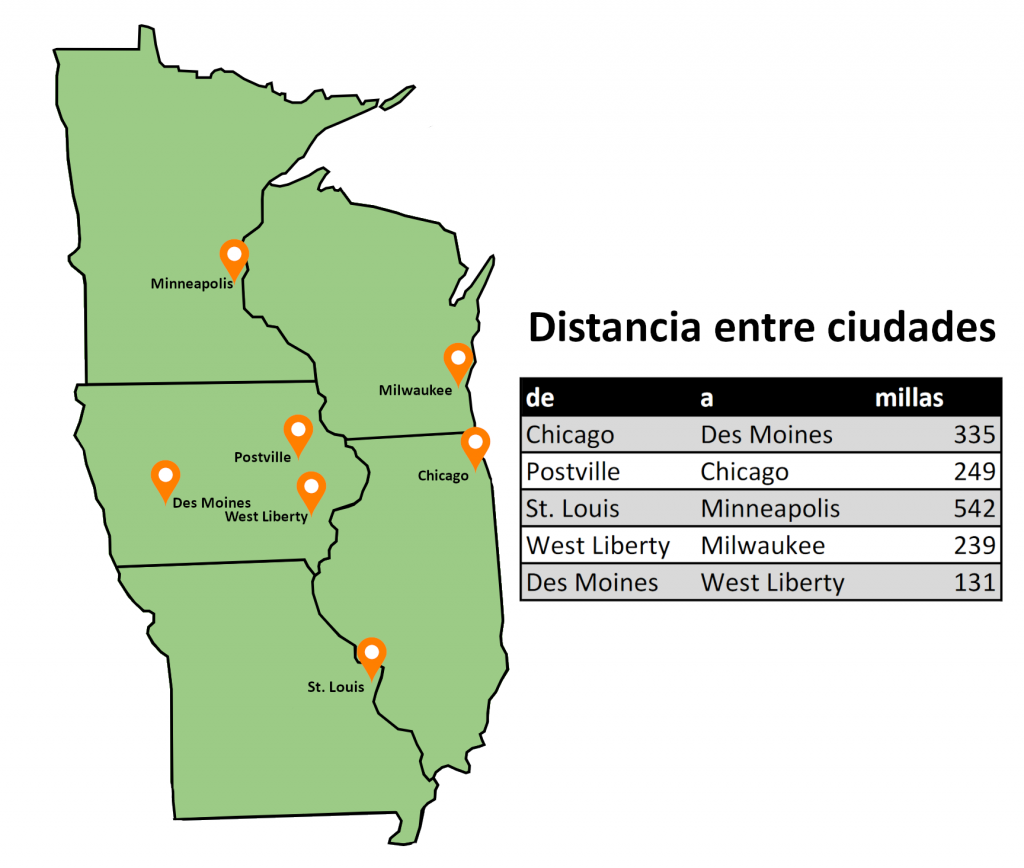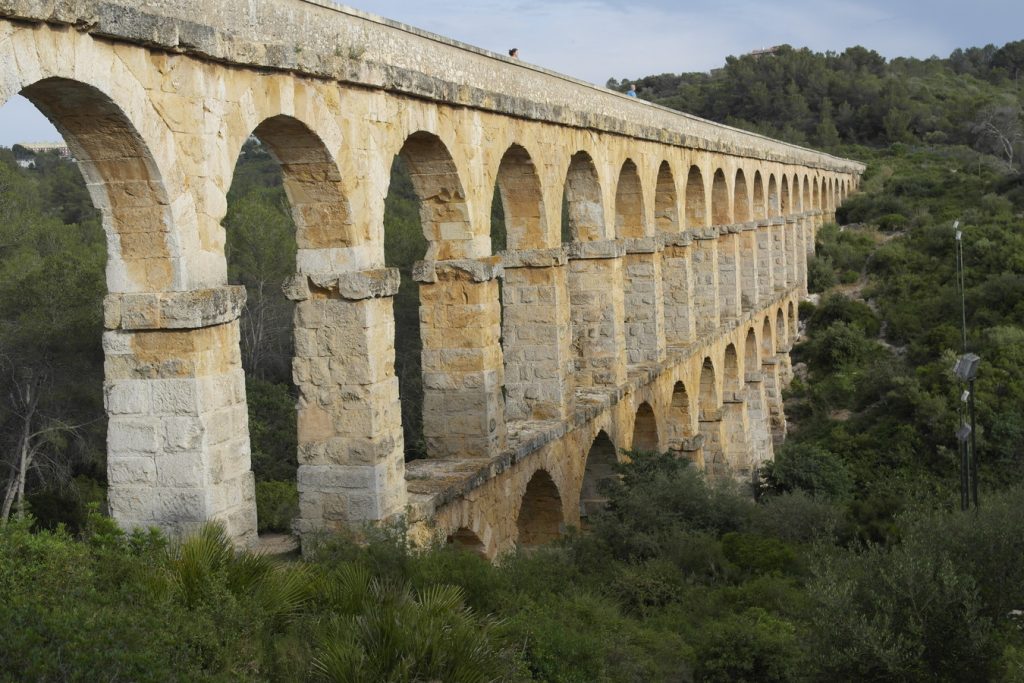17 Lesson 2D
1. Leer. Mark and Lisa are a young couple who just moved to Madrid, Spain, from Lincoln, Nebraska. Mark is a stay-at-home dad, and Lisa is a chemistry professor who will be working at the Universidad Autónoma de Madrid. Read the dialogue between them and a Spanish couple and answer the following questions.

Mark: Hola amigos. Lisa y yo estamos buscando algunos lugares para alquilar en Madrid. Hay tres opciones interesantes.
Carlos: ¡Genial! Cuéntanos sobre las opciones.
Lisa: La primera opción es un apartamento en el centro de Madrid, cerca de la Puerta del Sol. Tiene dos habitaciones, un baño moderno, una cocina bien equipada y un balcón con vista a la calle. El precio es de 1.200 euros al mes.
María: Suena muy bonito. ¿Qué tal la segunda opción?
Mark: La segunda opción es una casa en las afueras de la ciudad, en un barrio tranquilo llamado Moratalaz. Tiene tres habitaciones, dos baños, una amplia sala, una cocina con comedor y un jardín con zona de barbacoa. El precio es de 1.500 euros al mes.
Carlos: Me gusta la idea del jardín. ¿Cuál es la tercera opción?
Lisa: La tercera opción es un piso compartido (shared apartment) en un barrio popular llamado Malasaña. Hay dos habitaciones disponibles (available) cada una con un baño. La sala y la cocina son espacios comunes, y el edificio tiene una terraza en la azotea (rooftop). El precio es de 400 euros al mes por habitación.
- ¿En qué barrio se encuentra (do you find) el primer apartamento?
a) Malasaña
b) Moratalaz
c) Puerta del Sol
d) Salamanca - ¿Cuál es el precio del alquiler de la casa en las afueras de la ciudad?
a) 1.200 euros al mes
b) 1.500 euros al mes
c) 400 euros al mes
d) 800 euros al mes - ¿Cuántas habitaciones están disponibles (available) en el piso compartido en Malasaña?
a)1
b)2
c) 3
d)4 - ¿Cuáles son las ventajas y desventajas de vivir en el centro de Madrid?
2. Escribir. Read the dialogue from activity 1, and help Mark and Lisa pick the right place. First discuss the various options with a partner, and then, write down a short text with a list of the options you think work well for them. Consider the location, price, and if the rental fits their family’s needs. Make a recommendation about which place they should rent.

3. Elegir. Imagine you need to move from your university dormitory into a new apartment. Determine what items you need to buy.
| Sofá | Mesa | Sillón reclinable | Escritorio | Lámpara |
| Televisor | Computadora | Cómoda | Alfombra | Cama |
Modelo: Voy a comprar una silla. También, voy a…
4. Completar. Let’s practice a little bit more with muebles and other objects you need to furnish an apartment. Complete the sentences with the words from the table from activity 3. Remember that not all words will be used.
- En la sala, hay un _________________ para ver películas y programas de televisión.
- Para dormir (to sleep) cómodamente, necesitas una buena _________________.
- La _________________ de comedor es donde la familia se reúne (gathers) para comer (to eat) juntos.
- El _________________ es un lugar cómodo para relajarse o leer (to read) un libro.
- La _________________ es un mueble para la ropa (clothing)
- La _________________ es útil para navegar por internet, hacer trabajos y jugar (to play) videojuegos.
5. Compartir. Your best friend has also moved into a new place and wants some advice about furnishings. You are doing some online shopping, so your friend is asking about what you have found, how much it costs, and what it looks like. Tell them what you find using the information provided. Follow the model and be careful about agreement.
Modelo:
| Estudiante A | Estudiante B |
| (Sees the word “silla”) | |
| ¿Cuánto cuesta la silla? | (Finds picture of the chair) Cuesta cuatrocientos cincuenta dólares. |
| ¿Cómo es? | (Selects appropriate adjectives from bank) Es roja y moderna. |
Note for the instructor: Either print this before class or ask the students to open the following file on their devices. 2D Activity 5 information gap
6. Escribir. Now write a short paragraph about which furnishing is your favorite. You can include how much it costs, what room it is for, what it looks like, and why it is your favorite.
7. Adivinar. Watch the video and guess the price (in Euros, so you might want to check on Google to find the conversion rate) of each house for sale. At the end talk to your classmate and pick the one you would like to buy.
8. Identificar. Look at the map below.
Paso 1. After studying the map, answer the true/false questions.

Paso 2. Talk with a partner about the cities you’ve visited on the map and practice talking about traveling between them and explaining how many miles it takes to make that travel.
9. Escuchar. Listen to the audio clip about Nacho’s neighborhood.
Paso 1. Think about Nacho’s description of his neighborhood. Take a couple of minutes to do some research about how far your apartment or house is from some of the places you like to go most frequently. Then look at some of the distances between your favorite destinations in your town. If you don’t know, look it up on a maps app and write down your responses.
Paso 2. Chat with your partner about where some of these places are located and compare how the distances between places.
Modelo:
| Mi apartamento está a ____ millas de la biblioteca. |
| El edificio de español está a ____ millas de mi supermercado favorito. |
| Mi residencia estudiantil está a ____ millas de Chicago. |
10. Discutir. You and your friend are traveling. Each of you has some of the information about how far it is from place to place. Chat with each other to find out the distance between the different locations. Make sure to practice numbers as well as ideas about mayor and menor distancia.
Note for the instructor: either print it before class or ask the students to open the following file on their devices. 2D-Activity-10-information-gap
11. Leer. Read the following paragraph about Tarragona, a city in Spain.

Tarragona es una ciudad en España muy especial. Es muy antigua, del tiempo de los romanos. Tiene una plaza con una catedral y también un anfiteatro romano. Hay una calle muy larga y grande que se llama una “rambla”. La rambla tiene muchas tiendas, farmacias, restaurantes, y otros negocios. También hay una universidad en la ciudad que se llama Universitat Rovira y Virgili. Tarragona está al lado del mar, y tiene un puerto pequeño y unas playas bonitas. Fuera de la ciudad, hay un acueducto muy grande que mucha gente visita.

